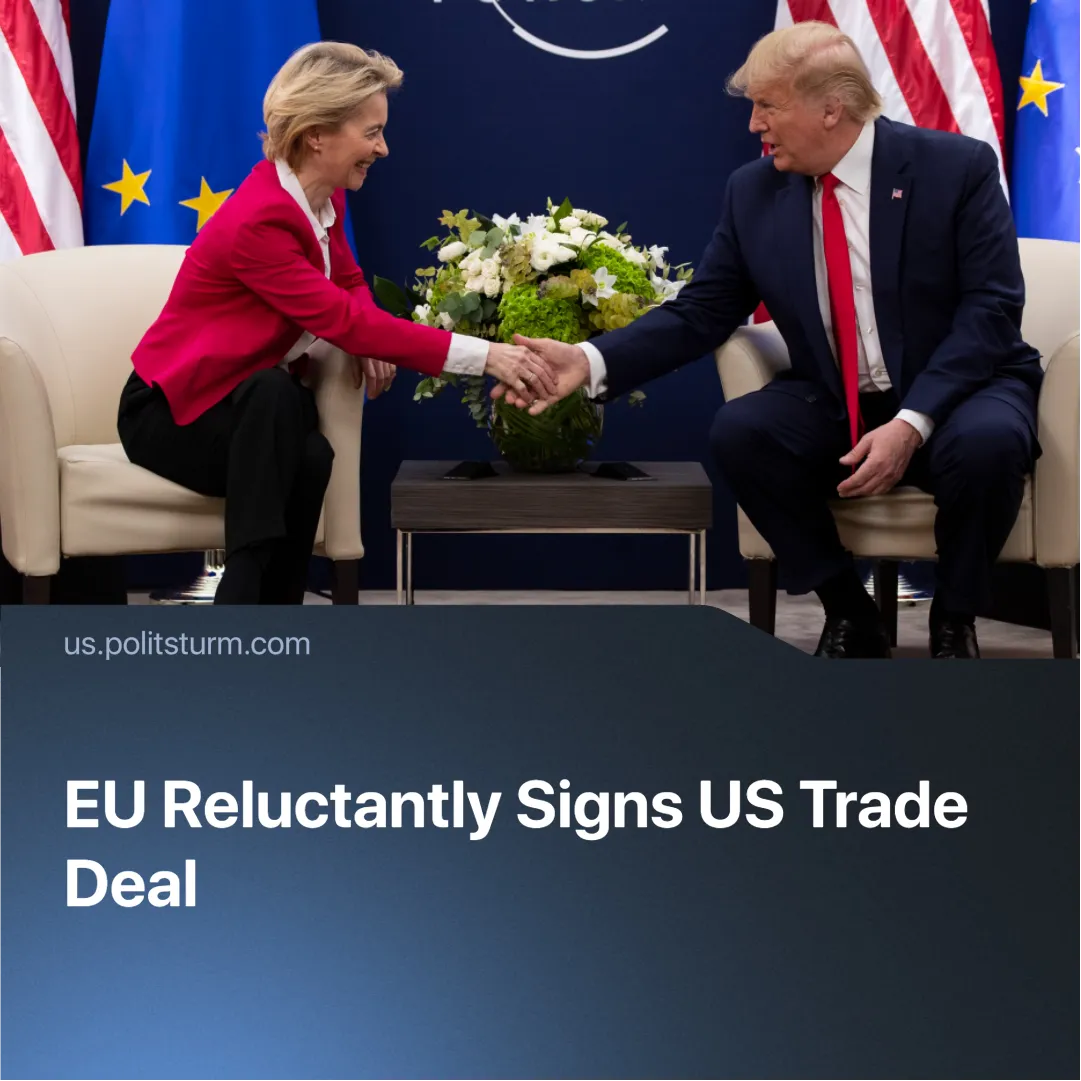The US and EU signed a trade deal. Trump called it the “biggest of all deals,” whilst the French Prime Minister criticised it as “submission.”
Details. On July 27, European Commission President Ursula von der Leyen and US President Donald Trump agreed on a deal regarding tariffs and trade.
▶ The agreement included a 15% tariff on most EU exports to the US, including cars, pharmaceuticals, semiconductors, and industrial machinery.
► The EU pledged $750 billion on US fossil fuels, to substitute Russian imports and $600 billion in investments into the US economy.
► EU Tariffs on US imports remain at 2.5%, with no binding guarantee of future reciprocity from the US.
▶ German Chancellor Friedrich Merz expressed relief that the agreement averted a trade‑war escalation, but admitted it would place a “significant burden” on Germany’s export‑oriented economy.
▶ French officials reacted more negatively. Prime Minister François Bayrou wrote on X: “It is a dark day when an alliance of free peoples … resigns itself to submission.” Trade Minister Laurent Saint‑Martin added in a radio interview that the deal “is not balanced, and we will need to keep working.”
▶ Ursula said the deal will bring “stability” and “predictability.” But admitted she had sought a “zero‑for‑zero reciprocity” scheme (no tariffs either way) on industrial goods, but under pressure fell back on soft pledges: “the best we could get under very difficult circumstances”.
Context. On July 12, 2025, Trump delivered an ultimatum: Europe faced 30 % tariffs unless it dropped its tariffs. EU Trade Commissioner Maroš Šefčovič said that 30% tariffs threatened by Trump would put 5 million jobs at risk.
▶ As the EU is still dependent on the US for trade, energy, and security. Brussels believed that a full-blown trade war would devastate export-driven economies such as Germany, Italy, and the Netherlands.
▶ The structure of EU investment in the US economy remains unclear. For comparison, when Japan signed a trade deal with the US in July 2025, Donald Trump claimed Japan was “putting up $550 billion to lower their tariffs a little bit.” However, Japan’s Chief Tariff Negotiator, Ryosei Akazawa, later estimated that only 1–2% of this amount would be direct investments, with the rest consisting of loans.
▶ Germany and France — the EU's largest economies — have pushed for the EU to strengthen its position as an independent power. Emmanuel Macron has repeatedly called for strategic, economic, and military autonomy, urging the EU to “defend European interests resolutely”. Germany is backing a €400 billion rearmament programme and supports EU participation in CPTPP trade, a Pacific trade bloc, and digital sovereignty projects.
Important to Know. By extracting one‑sided concessions, Trump has weakened pro‑US factions within the EU bourgeoisie and bolstered Europeanist factions — particularly in France and parts of German capital — that advocate for a more autonomous EU bloc.
► The contradiction between national capital interests — some more closely aligned with the US — and EU centralisation is sharpening under US pressure, threatening efforts to form a coherent imperialist bloc capable of rivalling the US or China. In some cases, Brussels has moved to suppress these rivals.
► These concessions to the US will already be borne by the European working class through higher energy costs, wage pressure, and cuts to social spending. Europeanist factions will exploit this discontent to attempt to rally support for deeper EU integration as “protection”, but strengthening autonomy would likewise demand infrastructure investment, new military spending and restructuring of trade blocs — again financed by intensified exploitation of workers.


